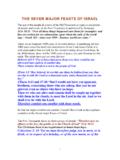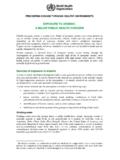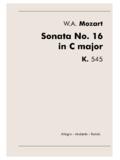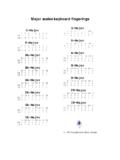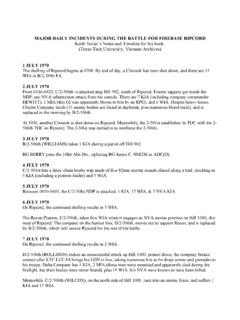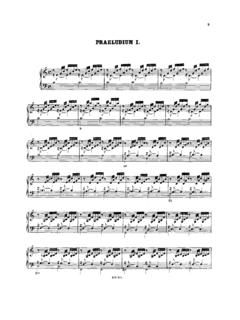Transcription of Thiamine deficiency - WHO
1 WHO/ : EnglishDistr: GeneralThiaminedeficiencyand its prevention and control in major emergencies World Health Organization, 1999 This document is not a formal publication of the World Health Organization (WHO), and allrights are reserved by the Organization. The document may, however, be freely reviewed,abstracted, quoted, reproduced or translated, in part or in whole, but not for sale or for usein conjunction with commercial views expressed in documents by named authors are solely the responsibility of Department of Nutrition for Health and Development of the World Health Organization(WHO), wishes to thank all those who generously gave their time to comment on an earlierdraft version, especially Rita Bhatia, United Nations High Commission for Refugees(UNHCR)
2 , Andy Seal, Centre for International Child Health, Institute of Child Health (ICH),London, and Kenneth Bailey from the Department of Nutrition for Health and Development,WHO, whose suggestions are reflected herein. Grateful acknowledgement is due to Professor Prakash S. Shetty, Head, Public HealthNutrition Unit, Department of Epidemiology & Population Health, London School of Hygieneand Tropical Medicine, for his tireless efforts to ensure the review s completeness and technicalaccuracy and also to Carol Aldous for preparing the document for review was prepared by Zita Weise Prinzo, Technical Officer, in WHO s Department ofNutrition for Health and of Tables and deficiency .
3 Outbreaks of Thiamine the general refugee and Thiamine Thiamine cardiologic or pernicious meningitic Thiamine detection of Thiamine theories on causes and , the and Metabolic and (Recommended Daily Allowance) for RDA for for for pregnancy and for for children and affecting Thiamine of Thiamine supplementation for preventing and treating Thiamine of in sources of in breast influencing content and utilization of Thiamine in in with other to reduce to prevent Thiamine deficiency in large populations affected by emergencies.
4 Of of parboiled rice or undermilled rice in place of polished of Thiamine -rich commodity to the food with Thiamine /vitamin of losses of Thiamine during preparation and cooking of of the intake of anti- Thiamine of appropriate food item with and 1: Summary of major symptoms of Thiamine deficiency in adults, adolescents and older 2: Summary of major symptoms of Thiamine deficiency in 3: A: Average Thiamine content of some B: Thiamine losses in food C: Studies on experimental Thiamine deficiency in humans showing intakes of Thiamine with the corresponding urinary excretion rate and clinical of Tables and FiguresTable 1 Thiamine deficiency in refugee 2 Thiamine content of a rice-based 3 Thiamine content of general ration distributed in Nepal in 4 Organ systems of the body affected in adult Thiamine 5 Classification of Thiamine pyrophosphate effect (TPPE)
5 In 6 Guidelines for the interpretation of urinary excretion of 7 Proposed criteria for assessing public health significanceof Thiamine deficiency in 8 Contrast in types of rice used and the incidence of Thiamine 9 Daily recommended intakes of 10 Recommended intakes of Thiamine for adults of different body 11 Bread as a source of 12 Thiamine content of diet and breast milk of lactating women in 13 Thiamine content of breastmilk in various groups of 14 Proposed criteria for assessment of breastmilk Thiamine 15 Types of anti- Thiamine factors and their 16 Options for the prevention of Thiamine deficiency in an 1 Thiamine content of general ration in relation to RDA for Thiamine based on energy content of the ration DeficiencyA clinical syndrome that arises insidiously as a result of a severe, prolongeddeficiency of Thiamine in the diet, manifested in the initial stages by anorexia,malaise, and weakness of the legs, frequently with paraesthesia; there may be slightoedema and palpitations.
6 The disorder may persist in this chronic state or may atany time progress to an acute condition characterized either by cardiac involvementwith oedema or by peripheral neuropathy; forms intermediate between these twoextremes may also occur. It is thought that the basic cause is the inhibition of aseries of enzyme-catalysed cleavages of carbon-carbon bonds in which thiaminediphosphate is a : beriberi; Ceylon sickness; occidental beriberi (in part); oriental beriberi(in part); rice : The disorder (or spectrum of disorders) is classically associated with a dietconsisting largely of polished rice (oriental beriberi), but may also arise if highlyrefined wheat flour forms a major part of the diet, in alcholics, and in food faddists(occidental beriberi).
7 Owing to the confusion that has surrounded the use of beriberi terms, it is recommended that they be : International Nomenclature of Diseases. Vol. IV Metabolic, Nutritional, and Endocrine Disorders. WHO,Geneva 1991 pg deficiency and its prevention and control in major emergencies1 IntroductionScope This is a document on Thiamine deficiency , which looks at the risk factors leading to outbreaks ofthiamine deficiency , describes the signs and symptoms of the deficiency disease, and discusses thestrategies to prevent the deficiency in populations affected by major emergencies.
8 A literaturereview of the epidemiology of Thiamine deficiency , the properties and functions of the vitaminthiamine, and a discussion of food sources of this vitamin and its stability is also provided. BackgroundOutbreaks of the micronutrient deficiency disease beriberi have occurred frequently in refugee anddisplaced populations dependent on international food aid. Nutritional deficiencies do not generallyoccur with the consumption of a moderately varied diet. However, the food rations distributed areusually not balanced in energy, protein and micronutrient content.
9 Moreover in the initial phase ofan emergency the affected populations are usually survivors of varying periods of minimal foodintake and many are ill with infections. Thiamine deficiency occurs where the diet consists mainlyof milled white cereals, including polished rice, and wheat flour, all very poor sources of deficiency can develop within 2-3 months of a deficient intake and can cause disability anddeath. Thiamine deficiency in refugees has been seen in Thailand at the beginning of the 1980's andin the 1990's, in Guinea (1990), Djibouti (1993) and in Nepal (1993-1995).
10 Recent outbreaks of Thiamine deficiencyIn the general populationIn the northern and north eastern parts of Thailand, Thiamine deficiency , confirmed biochemically,was reported to be common in spite of adequate but marginal Thiamine intakes, with the daily foodconsumption of the people being large amounts of glutinous rice, raw fermented fish and nut chewing was found to be common. From the data presented by Vimokesant and others(1982), anti- Thiamine factors in the diet may have been a precipitating factor causing the thiaminedeficiency in these population groups. Thiamine deficiency has been observed in pregnant women who have increased demands forthiamine.











